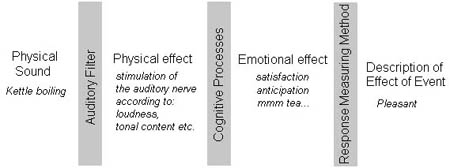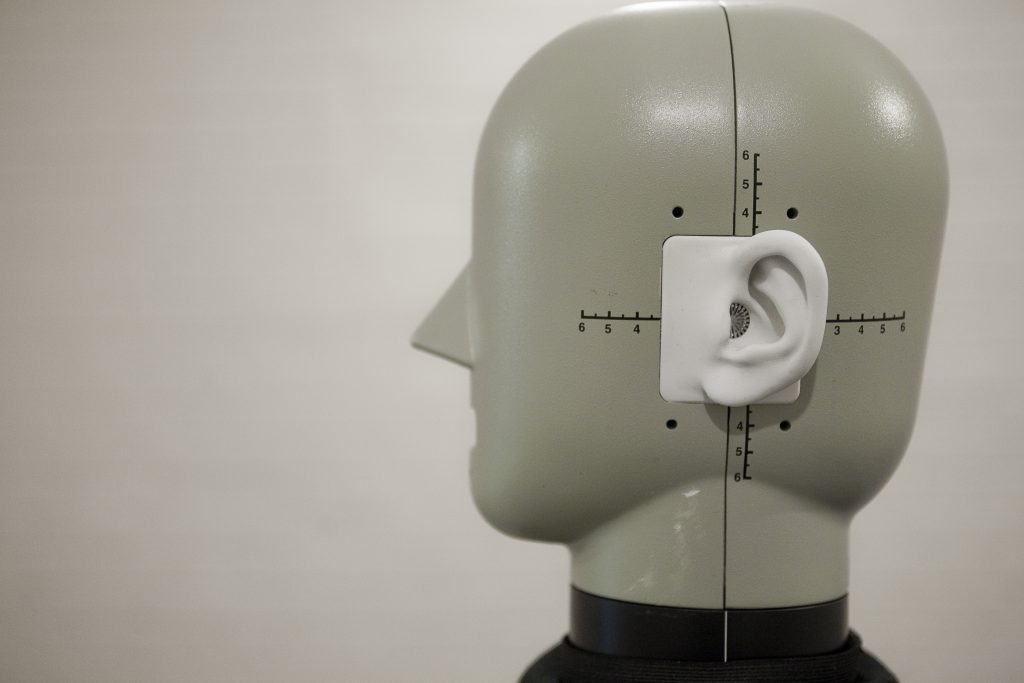Defining sound quality
There is no definitive explanation of the constituents of sound quality. Definitions of sound quality include examples such as:
“Sound Quality is a perceptual reaction to the sound of a product that reflects the listener’s reaction to how acceptable the sound of that product is: the more acceptable, the greater the SQ.” R. H. Lyon [1].
“The term Product Sound Quality refers to the adequacy of the sound from a product. This is evaluated on the basis of the totality of the sound’s auditory characteristics, with reference to the set of desirable product features that are apparent in the user’s cognitive and emotional situation.” C. L. Fog and T. H. Pederson [2].
Generally speaking most working definitions include the concept of the audible suitability of a product when compared with a user’s expectation. Sound quality testing is an important design concept in the automobile and audio industries. Marketing studies in these areas can demonstrate a relationship between sound and non-auditory concepts e.g. luxury, power, speed, safety, expense [3] making the sound of a product an important design consideration. Sound quality development itself should be an integral part of the design process and test methods should be part of the overall decision making process for product suitability.
Some companies with an interest in sound quality have adopted the concept of a product sound quality wheel [2, 4, 5, 6]. This concept can be explained briefly as follows: Beginning with a real or simulated product sound. The sound is presented to a jury who express an opinion, either by comparing several product sounds with each other, or quantifying some aspect of the sound, a questionnaire may be designed for this process. In parallel to this step quantifiable aspects of the sound are measured, we refer to these as metrics. Next comes a data processing stage which aims to determine the optimal product sound and identify significant metrics which can quantify this ‘ideal’ sound. With this knowledge a designer can return to the product design. Simulating how new, better products sound if necessary, and applying the knowledge of the ideal sound to implement design changes which will result in a better sounding product.

Fig 1. The product design cycle
A general version of the cycle of product development is presented in fig 1. It is possible to apply the ideas found in the sound quality wheel to all areas of the product development process. Prior to building a prototype, the predicted sound of the prototype can be simulated from knowledge of the acoustic properties of the materials to be used in its construction. After a protoype has been produced a more realistic sound can be recorded and tested, and once the product has been developed for mass production the effects of any changes necessary (e.g. to materials, or product assembly) can be tested.
Finally the success of the product in the market could be used as an indicator of the success of the product design and knowledge accumulated throughout the acoustic design process can be fed back into the design of new products. Knowledge of the acoustic properties of materials in a product could also be used to produce more realistic simulated sounds of potential products.
Another way the complex concept of sound quality can be represented is to divide it up into; the physical nature of the sound, the physical processes which take place in the ear, the cognitive processes which take place in the brain, and the method used to quantify the effect of the event (see fig 2).

Fig 2. Division of the processes taking place during sound quality evaluation
The majority of sound quality metrics can be divided into those that quantify some physical aspect of the sound (e.g. pressure level, frequency content) and those that try to quantify some physical effect taking place in the ear (e.g. impression of loudness, tone etc.). In the first case if we assume a particular physical measure of the sound is always going to produce a particular physical effect and in the second case if we assume that a particular physical effect is always going to produce a particular cognitive response. This model allows us to replace a human subject with a metrics calculator once knowledge of the cognitive reaction is established. The weakness in this approach obviously lies in the staticity of these assumptions.
Recent work on how the perceived meaning of a sound might affect the sound quality judgment has been carried out using an algorithm designed by Fastl to remove the identifiability of a sound. The work concedes that there are discrepancies between subjective judgments of identifiable sounds and non-identifiable sounds with the same objective metric values. It also suggests that this difference may be due to the perceived meaning of the sound [7, 8].
